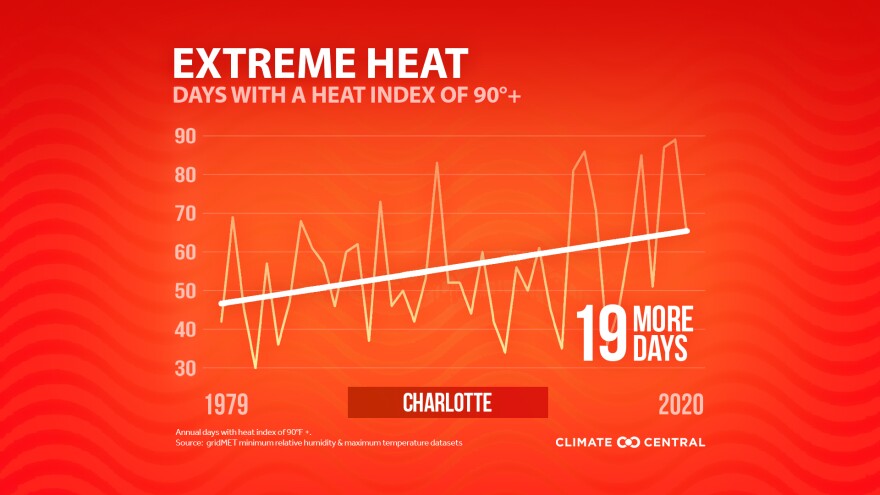Several days of high temperatures across the Carolinas are expected to continue into the weekend. If you're thinking we seem to have more days like this, you're right. Scientists say it's climate-related and a public health issue.
The annual tally of high-heat days has jumped over the past four decades in cities across the Carolinas. The numbers rise and fall, but the overall trend is up for days with a heat index over 90. That's a National Weather Service measure that combines heat and humidity.
Environmental health researcher Jaime Madrigano at the Rand Corp. said that means more hospitalizations.
"Extreme heat is a significant public health burden," Madrigano said. "And we often say that climate change is expected to worsen it. But what I wanted to point out is that climate change has already made it worse."
One recent example: Temperatures in the Pacific Northwest reached 116 degrees during a heat wave at the end of June. Scores of deaths were blamed on the high temperatures.
Scientists at the climate information service Climate Central found that Charleston, South Carolina, had 22 more high-heat days last year than in 1979. Charlotte had 19 more and Columbia, South Carolina, 17 more. Raleigh and Greenville, North Carolina, had 15, Wilmington 12 and Greensboro 10. Only Asheville, in the mountains, has stayed relatively flat.
Madrigano said the problem is more acute in cities, where temperatures can average 3-5 degrees hotter than surrounding rural areas. And she says that's amplified in neighborhoods with lower incomes and communities of color.
"While everyone can be at risk during a heat wave event, when temperatures get very hot, certain populations are more susceptible than others and are more frequently impacted," Madrigano said.
Urban studies professor Vivek Shandas of Portland State University said that's because of a lack of parks and green spaces, past redlining practices that brought disinvestment and segregation, and health disparities among people of color.





